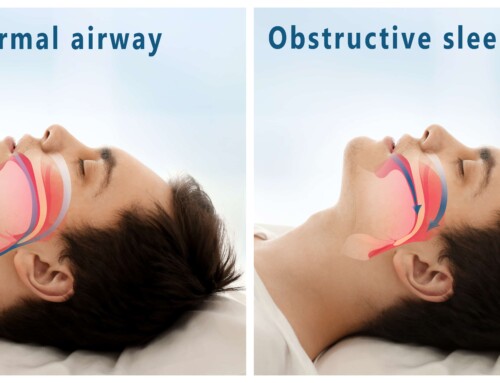Sleep Apnea Questions – How Do You Know You Have It or Should Be Tested?
Obstructive sleep apnea (OSA) is a surprisingly common condition that can be very serious if left untreated. It is possible to be unaware that you have OSA because the symptoms are not always obvious and can be attributed to other diseases. How do you know if you have OSA, and should you be tested just in case? Learning more about the condition can help you decide if seeking a diagnosis in the Houston area.
What Is Obstructive Sleep Apnea?
Sleep apnea occurs when an individual intermittently stops breathing while asleep. Although there are a variety of causes and types of sleep apnea, many cases are caused by too much relaxation of the soft tissues inside the throat. These relaxed soft tissues block the path of air entering the trachea. When the airway is physically blocked during sleep, causing a temporary halt in breathing, it is called obstructive sleep apnea.
What Are the Symptoms of OSA?
OSA often has no symptoms, other than the feeling that sleeping does not provide adequate rest. Many patients become aware of potential sleep apnea after a partner comments on excessive snoring or gasping for breath that happens while sleeping. Other observations include heavy breathing through the mouth or loud breathing. Other symptoms that may seem unrelated are often attributed to sleep apnea and can improve with treatment.
- Mood swings and irritability
- Depression
- Dry mouth and throat
- Headaches
- Chronic fatigue
- Unexplained weight gain
- Worsening blood pressure or heart rhythm irregularities
How Is OSA Diagnosed?
Although some cases of OSA can be diagnosed through reported symptoms, a sleep study is still the best way to observe the problem in action. Many patients can do an at home sleep study provided by Ingenious Dentistry or spend the night at a local Houston, TX sleep clinic under observation. Other diagnostic tests include imaging and physical examination.
Why Is Treating OSA Important?
Untreated OSA can have long-term consequences, including the development of chronic conditions such as high blood pressure and heart rhythm issues. There are several options for treatment, and many patients can use a custom dental appliance such as Vivos to reduce or eliminate symptoms of obstruction. The dental appliance process is simple, and the treatment is non-invasive.
-
Diagnosis
- The patient obtains an obstructive sleep apnea diagnosis from a qualified physician and informs the dentist.
-
Measurement
- The dentist uses specialized equipment to take images of the teeth and interior of the mouth to send to the dental appliance manufacturer.
-
Fabrication
- The manufacturer uses the images to create an oral appliance that is customized to fit the patient’s mouth exactly.
-
Fit Test and Instructions
- The device, which is similar to a mouth guard worn during sports, is checked to make sure it fits optimally. The patient is given instructions for proper wear and maintenance.
Who Should Seek an OSA Diagnosis?
Anyone experiencing the symptoms of sleep apnea should pursue a diagnosis before long-term conditions begin to develop. Testing for OSA is non-invasive, and the sooner a treatment plan can be developed, the better the prognosis.
How Can a Dental Patient Get Started?
The first step for OSA treatment is to receive a diagnosis. At your next dental appointment, let your dentist know that you may be experiencing the symptoms of sleep apnea, and care can be coordinated with a local Houston physician to explore the possibility. If diagnosed, your dentist can demonstrate your option to use a dental device if you are eligible and interested.
Maintaining good dental health is vital for many aspects of health, and making sure your dental health concerns are addressed can help relieve sleep apnea symptoms and help you avoid developing the condition. Contact Ingenious Dentistry to make an appointment to talk about OSA and any other dental health concerns you may have. You can also call us at (713) 795-5905.
_______
Photo Credit: baranq/shutterstock.com




